Introduction of Bakelite Sheet
What is Bakelite Sheet:
The introduction of the Bakelite sheet changed the world of thermosetting plastics in the early 1900s. The process of making the Bakelite sheet involves reacting phenol with formaldehyde. It is a hard synthetic polymer that has exceptional durability and heat resistance.
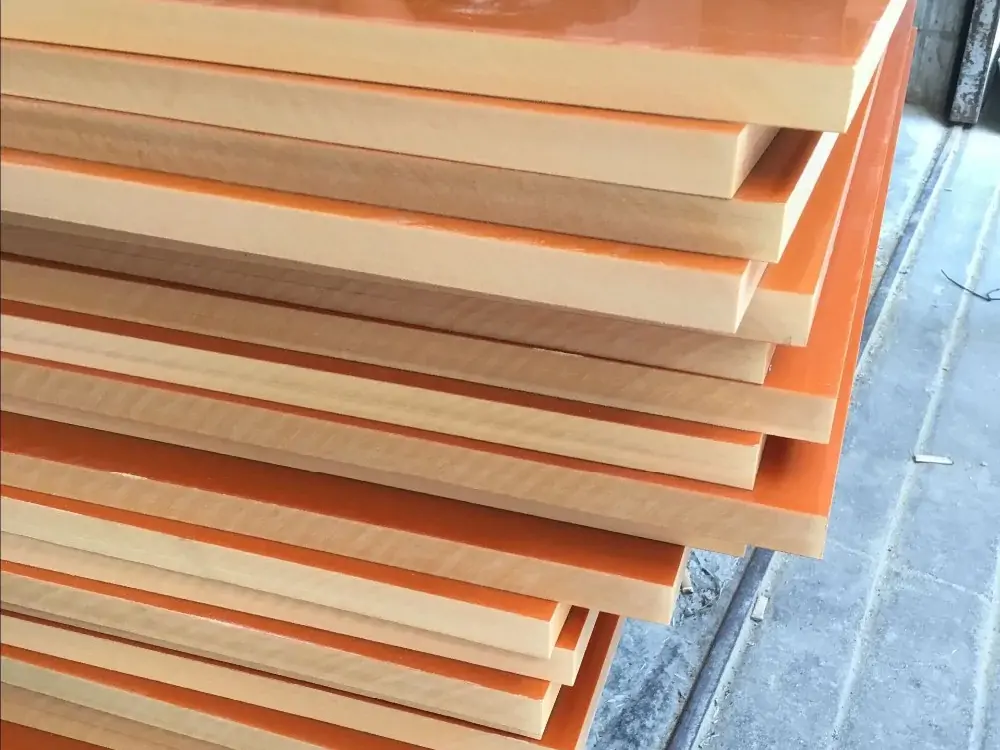
History of Bakelite sheet:
Leo Baekeland, a chemist from Belgium, invented the Bakelite sheet. It was a synthetic plastic. It became popular in the electrical industry in 1907.
Baekeland experimented with different combinations of materials. He found that when phenol and formaldehyde mixed. They created a tough and durable material. This new material could withstand high temperatures and was excellent for insulation. He named the new material Bakelite plastic after himself. Then he began producing it in large quantities.
During World War II, it was in high demand for military equipment manufacturing. Such as Bakelite radios, radar systems, and plane components.
Importance of Bakelite Sheet in modern Industries:
The Bakelite sheet remains a popular choice in several industries today. Its superior electrical insulation qualities make it particularly preferred in electrical applications. Like transformers, circuit breakers, and motor components. Additionally, the automotive industry uses it for making brake components, gears, and clutch plates. While the construction industry utilizes them to produce heat-resistant and durable building materials. Its invention heralded the era of plastics and has significantly influenced modern industry.
This article covers the properties, manufacturing process, and applications of Bakelite sheets. We also examine their advantages, disadvantages, and maintenance requirements.
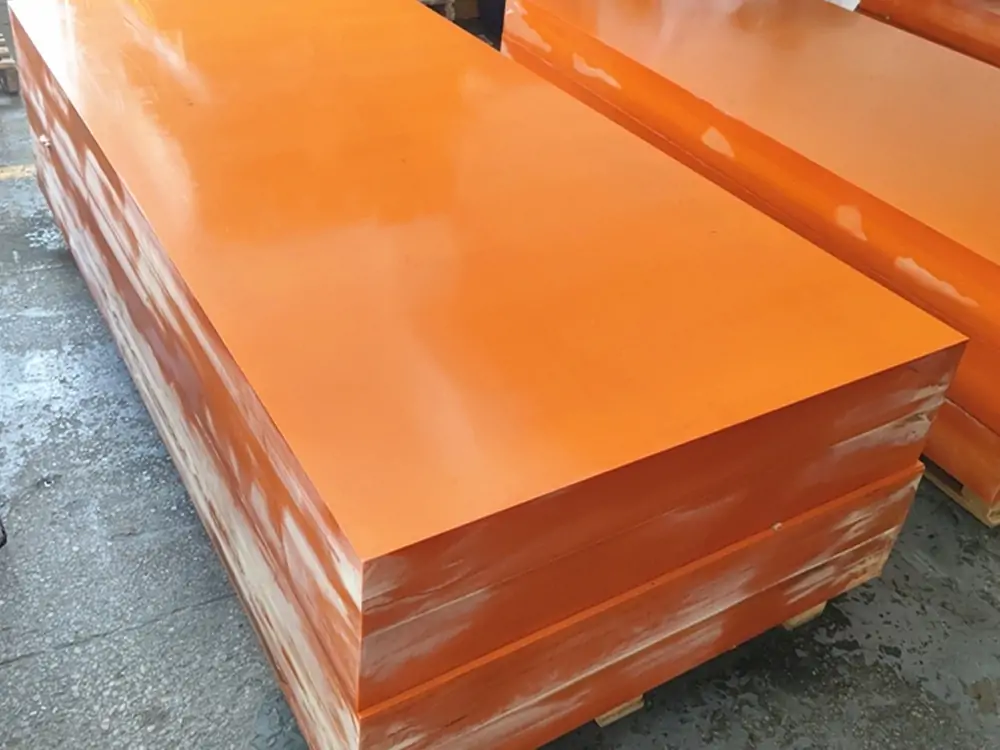
Properties of Bakelite Sheet
Industries extensively use Bakelite, a thermosetting plastic material with unique characteristics. Bakelite has many notable characteristics. These characteristics make it a perfect material for many operations.
Chemical Properties:
- The Bakelite Sheet can withstand many types of chemicals without getting damaged.
- Such as acids, bases, and solvents.
- The Bakelite sheet can tolerate water and moisture, which makes it a good choice for use in damp places.
- Moreover, Its resistance to oils and greases makes it perfect.
Mechanical Properties:
- Bakelite Sheet has excellent mechanical strength and hardness.
- It is also rigid and has low water absorption.
- Bakelite sheets can withstand high impact and compressive forces without cracking or breaking.
- The Bakelite sheet is very sturdy and can withstand a lot of wear and tear.
- Moreover, It is resistant to weathering. It does not deteriorate when exposed to sunlight, rain, or extreme temperatures.
- It has high tensile strength, which means that it can resist pulling forces.
- Additionally, It is also very stiff, which means that it can resist bending or flexing.
Thermal Properties:
- Bakelite is a heat-resistant material. It can endure elevated temperatures without undergoing degradation or melting.
- Bakelite has a high heat deflection temperature. It can resist deformation under high temperatures.
- Bakelite is also an excellent thermal insulator, which means that it can prevent the flow of heat.
Electrical Properties:
- Bakelite is a great material for stopping the flow of electricity because it is an excellent electrical insulator.
- It has a high dielectric strength. It resists breakdown when subjected to high voltages.
- Moreover, It is a good thermal insulator also which helps to prevent the flow of electric heat.
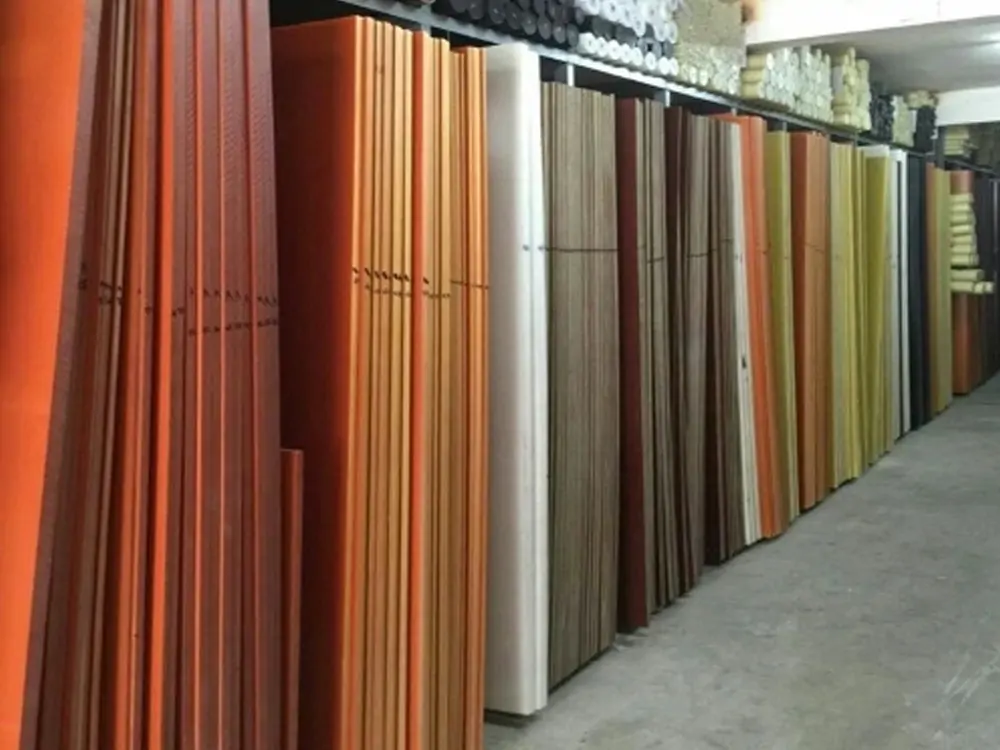
Manufacturing of Bakelite Sheet
Thermosetting synthetic resin is also called the Bakelite sheet. It undergoes a thermosetting process for manufacturing. It produces a firm and long-lasting substance. Its production procedure involves several steps.
Step 1: Mixing of Raw Material
The first step in manufacturing involves the mixing of raw materials in a reactor vessel. Raw materials include phenol, formaldehyde, and fillers such as wood or cotton cloth. A catalyst hydrochloric acid triggers the polymerization reaction while blending. As a result of this reaction, a thermosetting resin is formed.
Step 2: Impregnation of Paper
The next step involves the impregnation of paper with the thermosetting resin. A layer of resin is spread onto the paper and any excess resin is removed by passing it through rollers. The impregnated paper is then dried to remove moisture and prepare it for processing.
Step 3: Lamination
The process of laminating a Bakelite sheet involves arranging several layers of impregnated paper at a right angle to each other. Then, compressing and heating the material produces a hard and inflexible Bakelite substance.
Step 4: Curing
The final step in the manufacturing process involves curing. The press subjects the stacked layers of impregnated paper to high temperature and pressure to cure it. This initiates cross-linking in the thermosetting resin. Then the formation of a final product Bakelite sheet becomes completed. This product is a robust, heat-resistant, chemical-resistant material. This material can endure mechanical stress.
Applications of Bakelite Sheet
Various industries widely use it to produce Bakelite products. It has unique characteristics. Due to its numerous characteristics, this material is suitable for a broad spectrum of uses.
Electrical Insulation:
Due to its excellent electrical insulation properties. Bakelite sheet finds common usage in electrical applications, such as:
- switches
- sockets
- insulators
- transformers
- circuit breakers
- motor components
It is also utilized in the production of electrical connectors, terminal blocks, and printed circuit boards.
Automotive Industry:
The automotive industry utilizes the Bakelite sheet for creating various components. Such as brake components, clutch plates, and gears. It is also useful in producing electrical components. Like ignition switches, voltage regulators, and distributor caps. Additionally, it is used for manufacturing dashboard panels, knobs, and handles.
Construction Industry:
The construction industry uses the Bakelite sheet to make building materials. These materials are durable and heat resistant. Like laminated sheets, panels, and tiles. It is commonly used for the production of walls, ceilings, and floors. Additionally, It is utilized to make composite materials, like fiberglass-reinforced plastic (FRP). These materials are instrumental in producing structural components. Such as beams, columns, and bridges.
Aerospace Industry:
The exceptional resistance of the bakelite sheet to chemicals makes it appropriate for diverse industrial uses. It is a popular choice for making chemical-resistant products. Such as linings, coatings, pump impellers, and tanks. As well as it is used for making mechanical parts. Like bearings and gears that demand excellent wear resistance and high mechanical strength.
Consumer Goods:
It is also used in the manufacturing of handles for:
- Kitchen utensils
- Electrical appliances
- Other consumer goods
Others:
- Bakelite jewelry or plastic jewelry such as bakelite buttons, bangles, bracelets, and earrings.
- Epoxy chess board and bakelite chess sets
Advantages and Disadvantages of Bakelite Sheet
It has several advantages and disadvantages. Understanding these factors is important. It will help you decide whether to use Bakelite sheets in various applications.
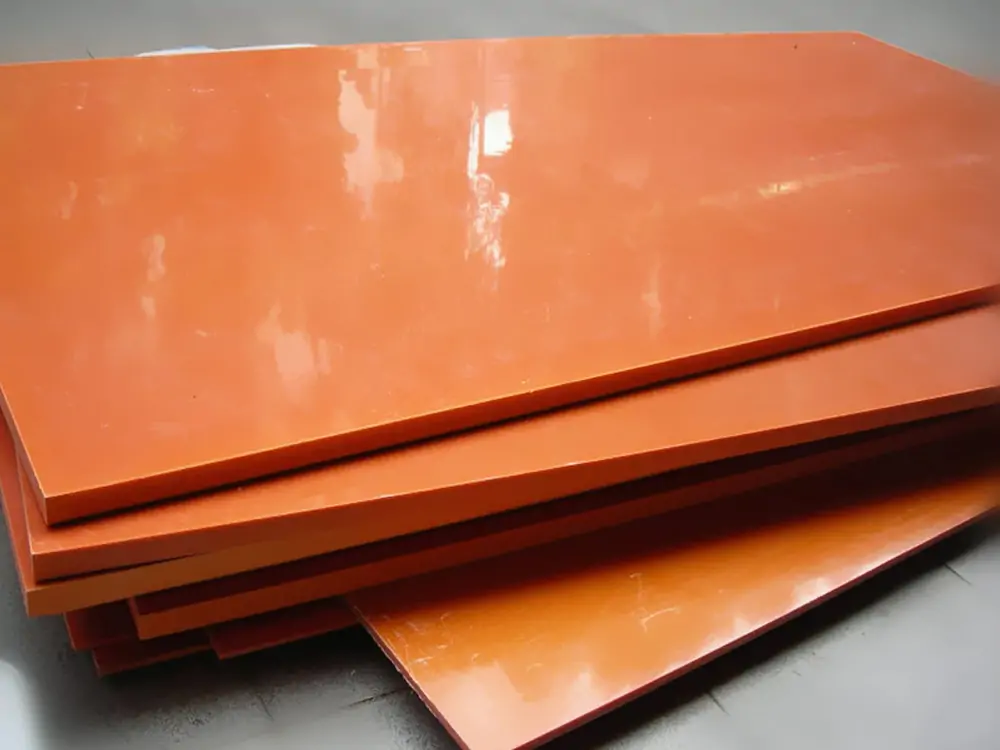
Advantages:
- Can not absorb water
- Excellent electrical insulation properties
- Resistant to chemicals, water, and oils
- Durable and long-lasting
- Easy to manufacture compared to other plastic materials
- Resistant to chemicals and heat due to its low thermal conductivity
- It can be molded easily
- After molding, it retains its shape
- Cheap than epoxy glass fiberboard
- Can’t melt
- Can’t burn
- Varieties of different designs
- To meet different needs, it can produce in various shapes, sizes, and designs
- Good dimension stability
Disadvantages:
- Brittleness
- Prone to cracking under stress
- Limited color options
- Not environmentally friendly
- Can not able to recycle
- Lack of high-temperature resistance
- Not much flexible as other plastics
- It is not biodegradable, and improper disposal can lead to environmental pollution.
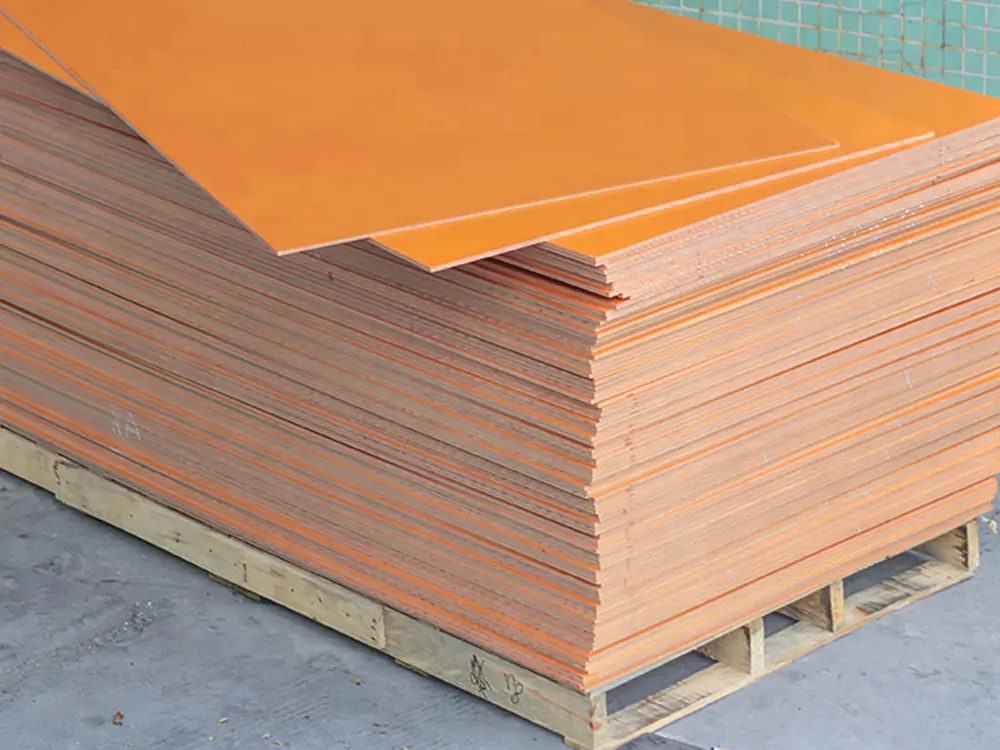
Maintenance and Care for Bakelite sheet
Bakelite sheet is a durable and strong material. It can withstand harsh environments and high temperatures. It is important to take good care of Bakelite to ensure that it lasts a long time and performs well over time. Here are some tips for maintaining and caring for the Bakelite sheet:
- Cleaning: You can easily clean it by using mild soap and water.
- Avoid harsh chemicals: Bakelite is resistant to many chemicals. But prolonged exposure to harsh chemicals can damage the surface. Avoid using harsh cleaners.
- Prevent scratches: Its integrity can be compromised easily if it is scratched. Don’t use rough materials or tools that can leave marks on the surface.
- Prevent exposure to heat: Prolonged exposure to high temperatures can cause the Bakelite sheet to warp or deform. Keep it away from direct heat sources like fire or hot surfaces.
- Celluloid vs. Bakelite: Run small Bakelite products like jewelry under hot tap water for 25 to 30 seconds. If your product is celluloid plastic, then it would melt under heat. While bakelite product does not melt under hot tap water.
- Storage: Store Bakelite in a cool, dry spot away from sunlight and moisture when not in use. This will prevent the material from warping or cracking.
- Regular inspection: Check the Bakelite sheet frequently for any damage like cracks or scratches. This will help you to fix any problems before they get worse.
Conclusion
In conclusion, various industries use the Bakelite sheet due to its unique properties. These properties make it a versatile material. Its electrical insulation properties, mechanical strength, heat, and chemical resistance, and cost-effectiveness make it suitable for many industrial applications. However, its Brittleness, limited color, and design options are challenging to machine. Thus, It is also important to consider environmental issues.
